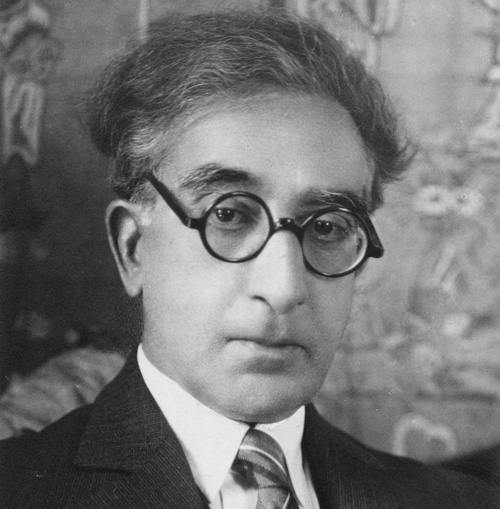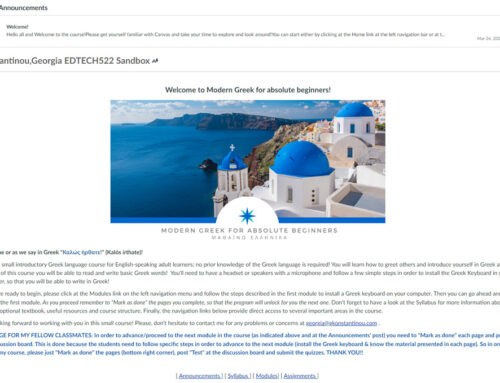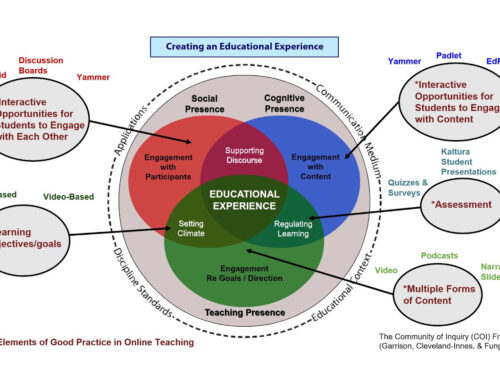As you set out for Ithaka
hope your road is a long one,
full of adventure, full of discovery. […]But don’t hurry the journey at all.
Better if it lasts for years,
so you’re old by the time you reach the island,
wealthy with all you’ve gained on the way.
…and I really enjoyed the journey of EDTECH 522 – Online Teaching Adult Learners and now that I have reached the end, I feel wealthy from the knowledge, the experience and the skills I gained on the way! So, reflecting on this course, there are so many technological tools and pedagogical theories that I could mention!!
For instance, Malcolm Knowles’ andragogy summarizes in six key assumptions the way adults approach new knowledge. His principles should definitely be taken into consideration when someone designs an adult’s course either in person or online. Even further, Grow’s Staged Self-Directed Learning (SSDL) model as described in Stavredes (2011) second chapter can help in identifying different stages of learners and determining the appropriate ways to support them. The Community of Inquiry Framework highlights how important it is to create a deep and meaningful (collaborative – constructivist) learning experience when offering an online course through the development of three independent elements – social, cognitive and teaching presence. Furthermore, through the evaluation of online courses we learned using the right criteria and instruments to identify all elements present in good online courses. We discussed graphic design principles, such as CARP (Contrast, alignment, Repetition and Proximity), and Stavredes (chapter 3, 2011) recommendation to start designing a course thinking about the end result and what students have to learn (learning objectives/ outcomes) before devising activities to assist in the teaching of these objectives (trying to achieve an activity-goal alignment) and developing the right assessments of students’ knowledge. Finally, as indicated by Ko and Rossen (2017), Universal Design for Learning should also be a prime concern when creating a new course to ensure that it’s suitable for ALL learners. “Universal Design in Learning means to design so that course content and instructional activities can be utilized by the greatest number of students to the greatest extent possible without having to make special adaptations” (Ko & Rossen, 2017, p. 52). So, video captions, creating content easily readable by screen reading software for the visually impaired, writing alt-text for all images, creating meaningful titles, offering multiple forms of assignments or instructions are all important aspects of this design.
But besides the theoretical foundation we also acquired technological skills and learned about tools that can help us enrich our lessons not only via our own discoveries but also through the posts of our peers. So, I discovered Notion workspace, that you can use to create, plan, explore, and complete all your tasks, Libguides that help students access materials and create their own research, Desmos, an advanced graphing calculator for Math students and many other tools. We also developed rich media tutorials that we can use in our classes. For example, the rich media tutorial I created on Quizlet can be very useful for my colleagues in assisting them to create vocabulary activities for their students. Also, while creating new resources I learned more about tools I was already using. For example, I learned new features and functions of Camtasia that I didn’t know before and by manipulating images I learnt a couple new things about Adobe photoshop. But I believe that the capstone of this course and maybe the most important and satisfying assignment was creating our very own online lesson on Canvas.
So, as a Greek language teacher I developed in Canvas an introductory Greek Language unit for English-speaking adult learners. This assignment nicely encapsulated, in my opinion, a well-organized course, forcing us to combine all of the theories we had explored during the semester in order to develop something important and meaningful for us. The small lesson I created for EDTECH 522 is a great starting point for an entire online Greek language course for beginners and I plan on extending it this summer and putting it in good use from September. EDTECH 522 was an amazing experience for me as it helped me explore important theories, principles and tools of online course design that I didn’t know before!!
References
Blondy, L. C. (2007). Evaluation and Application of Andragogical Assumptions to the Adult Online Learning Environment. Journal of Interactive Online Learning.
Cavafis, C.P. (1794). Ithaka. The Poetry Foundation. Translated by Edmund Keeley. Reproduced with permission of Princeton University Press.
Ferreira, D. & McLean, G. (2017). Andragogy in the 21st century: Applying the Assumptions of Adult Learning Online. Core. Language Research Bulletin, 32, ICU, Tokyo.
Ko, S. and Rossen, S. (2017). Teaching Online: A Practical Guide (4th Edition). New York: Routledge (2017). ISBN: 978-0-415-83243-4.
Stavredes, T. (2011). Effective online teaching: Foundations and strategies for student success. John Wiley & Sons, Incorporated. ISBN: 978-0-470-57838-4





